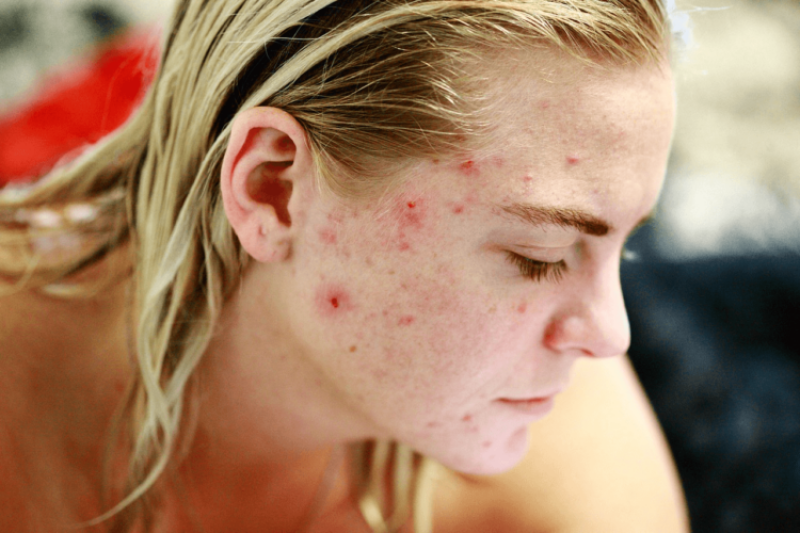The research team is completed by scientists from the Bellvitge Biomedical Research Institute (Idibell), the University of Barcelona, the Protein Technologies Facility of the Centre for Genomic Regulation, Phenocell SAS, Medizinische Hochschule Brandenburg Theodor Fontane, Lund University, and Aarhus University.
Acne is a common skin condition caused by the blockage or inflammation of the pilosebaceous follicles. Its appearance can vary, ranging from whiteheads and blackheads to pustules and nodules, mainly on the face, forehead, chest, upper back and shoulders. Although acne is most common among adolescents, it can affect people of all ages.
The most severe cases of acne are treated with antibiotics to kill bacteria living in the follicles, or isotretinoin (known as Accutane), a vitamin A derivative, which induces the death of sebocytes, the epithelial skin cells that produce sebum. However, these treatments can cause serious side effects such as breaking skin microbiome homeostasis -because they are not selectively killing bacteria- or photosensitivity, in the case of antibiotics, or birth defects or extreme scaling of skin, in the case of isotretinoin.
The results of the study, published today in Nature Biotechnology, show that researchers have successfully edited the genome of Cutibacterium acnes to secrete and produce NGAL protein known to be a mediator of the acne drug, isotretinoin, that has been shown to reduce sebum by inducing the death of sebocytes.
“We have developed a topical therapy with a targeted approach, using what nature already has. We engineered a bacterium that lives in the skin and make it produce what our skin needs. Here, we focused on treating acne, but this platform can be extended to several other indications”, says Nastassia Knödlseder, first author of the study.
Broadening the way of engineering bacteria
“Until now, C. acnes was considered an intractable bacterium. It was incredibly difficult to introduce DNA and get proteins produced or secreted from an element inserted into its genome”, explains Knödlseder, who is a postdoc in the UPF Translational Synthetic Biology Laboratory.
However, since C. acnes seems an attractive synthetic biology chassis for treating skin diseases due to its niche environment deep inside hair follicles -practically where sebum is released-, its importance for skin homeostasis, its close contact to relevant therapeutic targets, plus the fact that it has been shown to successfully engraft when applied to human skin, led them to insist on editing the genome of this non-engineerable bacterium.
To edit the genome of C. acnes, the research team led by Marc Güell has focused on improving DNA delivery to the cell, DNA stability inside the cell, and gene expression. The scientists have considered regulatory measures by developing a biocontainment strategy to avoid the use of elements that generate regulatory concerns such as mobile genetic elements, plasmids or antibiotic resistance. Hence, the resulting synthetic bacterium has safety features to enable “real-life application” and consider it for future human therapeutics.
Synthetic C. acnes is able to secrete and produce NGAL to modulate sebum production in cell lines. When applied to the skin of mice -the only animal model able to test engineered bacteria to date- they engraft, live and produce the protein. However, mice skin it is not comparable to humans’. It has more hair, is looser, has less lipids and a different sweat mechanism. Hence the need for an alternative model, better representing human skin, such as 3D skin models.
The road to therapeutics
“We have developed a technology platform that opens the door to editing any bacteria to treat multiple diseases. We are now focused in using C. acnes to treat acne but we can deliver genetic circuits to create smart microbes for applications related to skin sensing, or immune modulation”, points out Marc Güell, an ICREA researcher who has led the research.
Following the same strategy, this research line will continue under the European Project ‘SkinDev’ in which scientists from the Translational Synthetic Biology lab together with its partners will engineer C. acnes to address atopic dermatitis, a chronic cutaneous inflammatory condition characterized by dry skin, eczema and severe irritation, especially common among young children.
Although any living therapeutics strategy should be validated individually, the researchers show their optimism in applying these smart microbes to humans because non-engineered C. acnes has already been tested on the skin of patients safely and effectively.































